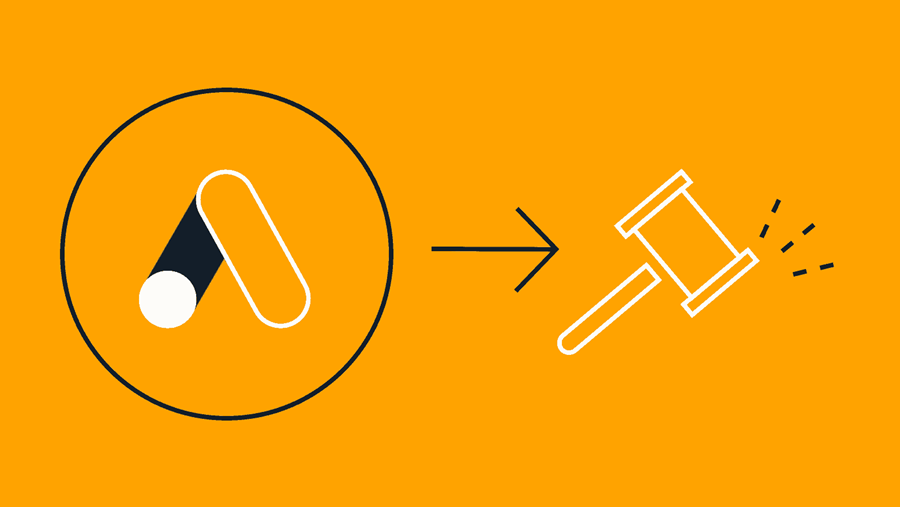Google Ads Competitor Analysis system (Bid Secrets Revealed)
Key Elements of Google Ads Competitor Analysis

Identifying Your True Competitors
When it comes to running Google Ads, many people believe that their main competitors are other businesses in the same industry selling similar products or services. However, this is not always the case. The competition in the digital advertising world is much more complex and extensive than one might think. While businesses within your industry may pose a certain level of competition, it is essential to understand that the online advertising space is highly competitive and diverse. Your competition could be businesses targeting the same audience or keywords as you, even if they don't offer identical products or services.
Furthermore, Google Ads operates on an auction-based system, meaning that multiple advertisers can bid on the same keywords and try to reach the same set of potential customers. This means that your competition extends beyond the boundaries of your industry, as anyone vying for the same audience becomes a competitor in the digital advertising landscape.
Moreover, users' search behaviour plays a key role in determining who your real competitors are. Depending on the search intent and keywords used, Google Ads may display a mix of businesses that cater to the searcher's needs, regardless of the industry they belong to. This means that businesses outside your niche can still compete for the attention and clicks of your potential customers.
Understanding this broader concept of competition is crucial for effective Google Ads campaign management. By expanding your scope and analyzing competitors beyond your immediate industry, you can gain valuable insights, discover new strategies, and make informed decisions that help you stand out in the digital advertising space.
However, when you run Google Ads, it's easy to assume your biggest competitors are businesses selling the same products or services. But in the world of online advertising, things are a little trickier! Here's why:
Keywords are King: People search for things using keywords. Your true Google Ads competitors might be targeting the same keywords as you, even if they aren't offering the same thing. For example, a bakery and a pizza shop might both target the keyword "late-night food delivery."
Broader Interests: Someone searching for "vegan skincare" might also be interested in cruelty-free makeup or sustainable fashion, even if those aren't your direct products.
Dissecting Competitor Ad Campaigns (Your Secret Weapon)
Think of this like a detective story. You're investigating how your competitors use Google Ads to see what works and what doesn't. Here's what to look for:
Keywords: What words and phrases trigger their ads to show up? This tells you what your target audience is searching for.
Ad Copy: How do they write those catchy headlines and descriptions? Study the words they use to attract customers.
Landing Pages: Where do their ads take people? These pages should seamlessly connect with the ad message and are designed to convert visitors into customers.
Visuals: Do they use images or videos? If so, what kind? Visuals can make a big impact on people's attention.
Why Dissect Competitor Campaigns?
Undoubtedly, there should be a rationale for any step or decision made in business. Let’s see how you can benefit from dissecting competitor’s campaigns;
Inspiration: Don't copy, but successful ads can spark great ideas for your own.
Beat Weaknesses: Are they missing important keywords or have confusing landing pages? Use this to your advantage!
Stay Ahead: Your competitors are evolving. Regular analysis helps you keep up and avoid falling behind.
Understanding Bidding Strategies

What are bidding strategies?
In Google Ads, bidding strategies tell Google how you want to manage your ad campaigns. It's like automatic instructions that help Google get the best results for your advertising goals.
Why is it important to understand bidding strategies?
Understanding bidding strategies in Google Ads is crucial for several reasons. Firstly, it allows you to outperform your competitors by optimizing your bids effectively. By understanding bidding strategies, you can strategically set your maximum bid and increase your chances of getting your ad displayed in prominent positions on search engine results pages.
Additionally, comprehending bidding strategies helps you maximize your return on investment (ROI). When you understand how different bidding options like manual CPC or automated bidding work, you can make informed decisions that align with your marketing goals and budget. This knowledge empowers you to allocate your budget wisely, ensuring that you are getting the most out of your ad spend.
Moreover, a clear understanding of bidding strategies enables you to stay competitive in the ever-evolving digital advertising landscape. With constant changes in market dynamics and new competitors entering the scene, being aware of bidding strategies allows you to adapt quickly and make necessary adjustments to outmaneuver your rival. Below are some other reasons you should understand bidding strategies.
Control your costs: Different bidding strategies let you decide how much you're willing to spend each time someone clicks your ad.
Target the right spots: Some strategies automatically adjust bids to help your ads appear in the top results or outrank your competitors.
Save you time: Automated bidding means less work for you constantly tweaking bids on hundreds of keywords.
You might be wondering what are the most effective bidding strategies. Here are some;
Maximize Clicks: Aim to get you as many clicks as possible within your budget.
Target CPA: Try to get conversions (sales, leads, etc.) at a specific price you choose.
Target Impression Share: Focus on making your ads visible as often as possible.
Identifying Strengths, Weaknesses, and Opportunities
It's like a Detective Job! When you analyze your competitors in Google Ads, you act like a detective. You're collecting clues to figure out what they're good at and where they could be better.
By strength, I mean what your competitors do well. This is where you ask questions like; Do they have clever ads that catch attention? Are they using keywords you have yet to think of? Maybe they target a specific group of customers well. If you find answers to these hypothetical questions, you are on the way to topping the game.
Contrarily, weaknesses simply mean where your competitors stumble. You can watch out for questions like; Are their ads confusing or boring? Do they miss out on important keywords? Could their website be better designed for customers?
Talking about opportunities, these are your Chances to shine
By leveraging your findings about your competitor’s strengths and weaknesses, you can proceed to take action by asking yourself these questions; Can you use the keywords they're missing? Could you make a more exciting ad than theirs? Can you design a website that's easier to shop on?
Why does this matter?
Knowing your competitors' strengths and weaknesses gives you a huge advantage. It helps you learn from the best, see what's working well and try something similar. Furthermore, helps you avoid mistakes. Thus you won't fall into the same traps as your competitors. You would stand out by using their weaknesses to make your Google Ads even better!
Tools to Power Up Your Analysis

When it comes to analyzing your competitors' Google Ads strategies, there are several tools available that can help you gain valuable insights. These tools are designed to make your analysis process easier and more efficient.
- SEMrush:
SEMrush is a comprehensive competitor analysis tool that offers a wide range of features. It allows you to explore your competitors' ad copies, keywords, budget estimates, and even their top-performing ads. With SEMrush, you can gain a deeper understanding of your competitors' strategies and make data-driven decisions for your campaigns.
- SpyFu:
SpyFu is another popular tool for competitor analysis. It provides you with detailed information about your competitors' keywords, ad performance, and SEO strategies. SpyFu also allows you to track your competitors' ad history, which can be incredibly useful in understanding their long-term advertising tactics.
- AdEspresso:
AdEspresso is a powerful tool that focuses on Facebook advertising, but it also provides insights into Google Ads. With AdEspresso, you can discover which ads your competitors are running on Google, how they are targeting their audience, and what kind of results they are achieving. This tool offers a user-friendly interface that makes it easy to navigate and analyze your competitors' strategies.
- Google Ads Auction Insights:
While not technically a third-party tool, Google Ads Auction Insights provides valuable information on how your ads are performing about your competitors. It shows your impression share, average position, overlap rate, and other key metrics. By analyzing these insights, you can identify areas where your ads could improve and stay ahead of your competition.
By utilizing these tools, you can enhance your Google Ads competitor analysis and stay updated on the ever-changing landscape of online advertising. Each tool has its unique features and advantages, so it's a good idea to experiment and find the one that best suits your needs and budget.
Turning Analysis into Actionable Strategies

To effectively utilize Google Ads for your online marketing campaigns, it is crucial to understand your competitors and their strategies. A thorough competitor analysis can provide valuable insights and help turn data into actionable strategies. In this guide, we will outline the best ways to convert Google Ads competitor analysis into actionable tactics for your campaigns.
- Identify and Analyze Your Competitors:
Start by identifying your main competitors in the online advertising space. Once you have a list, conduct a comprehensive analysis by examining their target keywords, ad copy, landing pages, and overall ad performance. This analysis will help you understand their strengths and weaknesses.
- Uncover Their Unique Selling Points:
By closely studying your competitors' ads and landing pages, identify their unique selling propositions (USPs). This will help you determine how they differentiate themselves from the competition and what aspects of their messaging resonate with the audience. Incorporating similar elements in your campaigns can help you attract the right customers.
- Track Their Ad Performance:
Utilize tools like Google Ads Auction Insights to gain insights into your competitors' ad positioning, impression share, and overlap with your ads. By monitoring these metrics, you can identify opportunities to outperform your rivals and optimize your campaigns accordingly.
- Evaluate Landing Page Strategies:
Analyze your competitors' landing pages to understand their conversion optimization tactics. Look for elements such as clear call-to-actions (CTAs), persuasive messaging, user-friendly design, and compelling offers. Incorporate these features into your landing pages to enhance user experience and boost conversion rates.
- Explore Keyword Strategies:
Identify keywords commonly used by your competitors in their ads. Use tools like Google Keyword Planner to find related keywords and uncover new opportunities. Incorporate these keywords into your campaigns to expand your reach and increase ad visibility.
- Continuous Monitoring and Testing:
Competitor analysis should be an ongoing process. Regularly monitor your competitors' campaigns and adapt as necessary to stay ahead of the game. Implement A/B testing to experiment with different strategies and discover what works best for your target audience.

